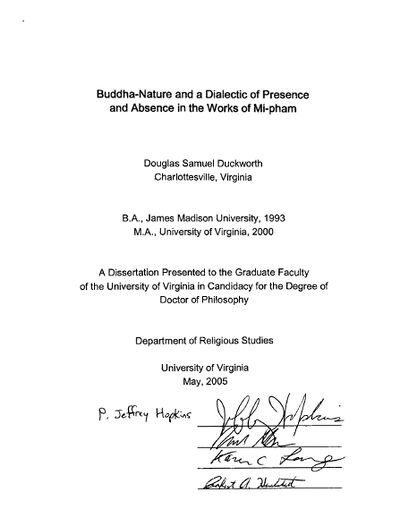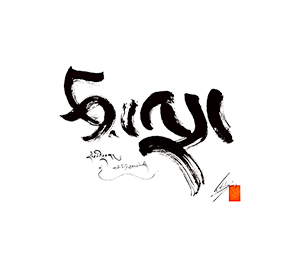Buddha-Nature and a Dialectic of Presence and Absence in the Works of Mi-pham
< Books
Abstract
This dissertation addresses the relationship between metaphysical presence and absence (emptiness) in Buddhism through a focus on the Nying-ma tradition as articulated in the works of Mi-pham ( 'ju mi pham rgya mtsho, 1846-1912), a great synthesizer of Buddhist doctrine and Nying-ma philosophy. I draw widely from his writings on Yogācāra, Madhyamaka, and tantra to discuss the significance of an ontological "ground" (gzhi), or Buddha-nature, as the central theme in his overall interpretative scheme. Mi-pham was a prolific writer on a variety of topics, and had a remarkable ability to synthesize diverse strands of thought. The tradition of the Nying-ma is a complex one, and there are many divergent and competing voices that lay claim to the tradition. I will try to present important facets of this central theme in Mi-pham’s philosophy of Nying-ma, and show how he uses a dialectic of presence and absence around which he discusses a unified ground.
Mi-pham was a prominent figure in the Tibetan non-sectarian (ris med) movement in the late nineteenth and early twentieth centuries. He most notably brought esoteric Nying-ma doctrines into conversation with the exoteric scholastic discourses of his day. Mi-pham formulates the Nying-ma tradition of his predecessors Long-chen-pa (klong chen rab 'byam, 1308-1364) and Rong-zom (rong zom chos kyi bzang po, ca. 11th c.) in response to traditions of "other-emptiness," through which he distinguishes his Nying-ma tradition.
Buddha-nature is a theme in Mi-pham's work that has a strong association with tantra in the Nying-ma tradition. His affirmation of the presence of Buddha-nature as intrinsic within the ground of existence shares predominant characteristics of the discourses of tantra in the Nying-ma tradition and, in particular, the Great Perfection (rdzogs chen). The Great Perfection is an antischolastic textual and meditative tradition that consistently evades systematic analysis, and in a fundamental way is antithetical to abstract conceptual determination. Mi-pham creatively formulates the esoteric discourses that have defined the Nying-ma tradition—the Great Perfection and the tantric tradition of the Guhyagarbha—in terms of central exoteric discourses of Buddhism: Buddha-nature, the Middle Way, and Buddhist epistemological systems. This dissertation explores a range of topics within Mi-pham's thought to underscore Buddha-nature and a dialectic of presence and absence as a central thread that runs through his interpretative system.
| Citation | Duckworth, Douglas S. "Buddha-Nature and a Dialectic of Presence and Absence in the Works of Mi-Pham (mi pham rgya mtsho)." PhD Diss, University of Virginia, 2005. |
|---|---|

